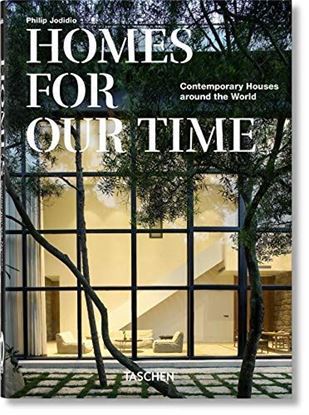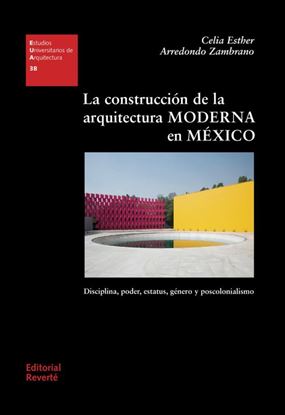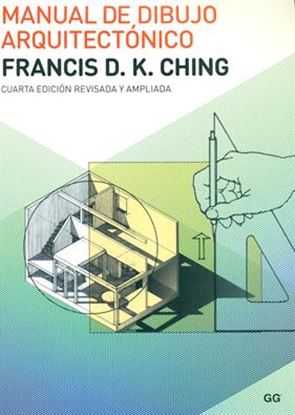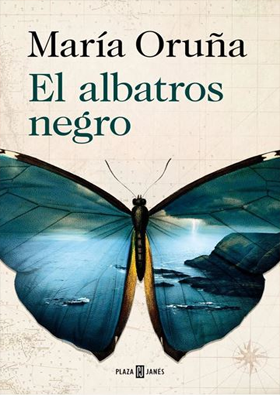

HOMES FOR OUR TIME (ING) (40 ANIV.)
Across small cottages and lavish villas, beach houses and forest refuges, discover the world’s finest crop of new homes. This cutting-edge global digest features such talents as Shigeru Ban and Marcio Kogan alongside up-and-coming names like Aires Mateus, Xu Fu-Min, Vo Trong Nghia, Desai Chia, and Shunri Nishizawa. Here, there are homes in Australia and New Zealand, from China and Vietnam, in the United States and Mexico, and on to less expected places like Ecuador and Costa Rica. The result is a sweeping survey of the contemporary house and a revelation that homes across the globe may have more in common than expected.
Among guava trees and abandoned forts in Western India is a sanctuary designed for and by Kamal Malik of Malik Architecture. The House of Three Streams is a sprawling spectacle with high ceilings, verandas, and pavilions, perched atop a ridge overlooking two ravines. A medley of steel, glass, wood, and stone, the house weaves along the contour of the landscape, almost as an extension of the forest. Encina House by Aranguren & Gallegos, an elegant, sloping structure reminiscent of a gazebo, similarly inhabits its surrounding vista. Ensconced in a pine forest north of Madrid, the lower level is embedded in rock and connected to the upper by a natural stone wall. Shinichi Ogawa’s Seaside House is an immaculate two-story minimalist marvel in Kanagawa that overlooks the Pacific. Its living area spills onto a cantilevered terrace and infinity pool, almost dissolving into the ocean as one seamless entity. In Vietnam, Shunri Nishizawa’s House in Chau Doc exudes tropical sophistication with exposed timber beams, woven bamboo, plants, concrete panels, and inner balconies and terraces. Its corrugated iron panels act as moveable walls and shutters, ushering in views of surrounding rice fields.
2,300
1,840
PRINCIPIOS UNIVERSALES DE TIPOGRAFIA
* 100 conceptos, teorías y reglas clave para elegir, combinar y utilizar la tipografía: un libro que lo equipará con todo lo que necesita para tomar las decisiones tipográficas más informadas en sus trabajos de diseño, sea cual sea el medio. * Profusamente ilustrado y de fácil comprensión, con explicaciones claras combinadas con ejemplos visuales, principios comprobados a lo largo de cientos de años de composición tipográfica y los últimos avances en tecnología de navegadores, fuentes web y fuentes variables. * El arte y la ciencia de la tipografía combinan ajustes sutiles en la longitud de las líneas con mezclas armoniosas de pesos y estilos, emparejamientos de tipografías seleccionados con esmero junto a un conjunto sólido de caracteres alternativos, y avances tecnológicos emocionantes con las realidades de las licencias tipográficas. Existen innumerables maneras en las que los diseñadores pueden mejorar la legibilidad de un texto e influir en cómo se entiende su mensaje; sin embargo, muchos diseñadores comunican mal sin siquiera darse cuenta. Información completa y autorizada junto a ejemplos didácticos e inspiradores en temas multidisciplinares para diseñadores, arquitectos, ingenieros, estudiantes y cualquiera que esté interesado en ampliar y enriquecer sus conocimientos en diseño.
2,350
1,880
LA CONSTRUCCION DE LA ARQUITECTURA M.
Este libro presenta la construcción de la arquitectura moderna me- xicana mediante un enfoque basado en cinco estructuras de poder: la académica, la económica y política, la de estatus social, la de género y la poscolonial. Se incluyen también fragmentos de entre- vistas y análisis de obras de trece destacados arquitectos: Luis Ba- rragán, José Villagrán García, Juan O'Gorman, Pedro Ramírez Váz- quez, Agustín Hernández, Abraham Zabludovsky, Carlos Mijares, Ricardo Legorreta, Juan José Díaz Infante, Enrique Norten, Alberto Kalach, Javier Sordo Madaleno y Clara de Buen. Todo ello pro- porciona un testimonio vivo de todo ese proceso.
Si bien las cinco estructuras de poder enmarcaron y definieron esa arquitectura, las entrevistas de unos arquitectos que fueron sus protagonistas ayudan a descubrir e identificar sutilezas y matices en lo acontecido en ese periodo. De este modo, sus voces arrojan luz sobre lo que contribuyó a hacer de la arquitectura moderna mexicana algo tan singular a escala mundial. Aunque esos arqui- tectos no siempre fueron conscientes de la presencia de esas estruc- turas de poder, sus proyectos participaron en la marginación, la discriminación y el sometimiento que tales estructuras provocaban. En este sentido, el presente estudio también revela hasta qué punto dichas estructuras de poder están todavía presentes en la arquitec- tura mexicana actual.
2,400
1,920
PENSAR CON TIPOS. UNA GUIA CLAVE
Profundamente revisada y ampliada, esta segunda edición de Pensar con tipos nos proporciona docenas de nuevas fuentes, ejemplos, ejercicios, ideas y consejos, además de una revisión y actualización exhaustiva de cada detalle. Con treinta y dos páginas nuevas respecto a la edición anterior, el nuevo contenido aporta, entre otras cosas, una amplia gama de familias tipográficas y un espacio para los trabajos de las diseñadoras, así como de otros colectivos históricamente silenciados.
Convertido en un referente indiscutible, la obra se dirige a los lectores y escritores, diseñadores y editores, profesores y estudiantes cuyo trabajo esté relacionado con la impredecible vida de la palabra escrita, así como a todos aquellos interesados en las cuestiones culturales y teóricas que alimentan el diseño tipográfico.
La obra se divide en tres secciones: letra, texto y maqueta. Partiendo de la unidad básica que es la letra, aborda después las particularidades de la organización de las palabras en cuerpos de texto coherentes y sistemas flexibles. Los proyectos de muestra y los ejercicios prácticos que se incluyen, explican no solo cómo se estructura la tipografía, sino por qué se hace así, con la intención de desvelar las bases funcionales y culturales que residen tras las convenciones del diseño.
2,400
1,920
EL LIBRO DEL DISEÑO
Una visión fascinante de los movimientos del diseño, que muestra cómo comenzó cada uno y describe su filosofía y estilo visual. El diseño está presente en todo lo que hacemos y fabricamos. Ha dado forma a nuestro mundo desde tiempos inmemorialesy sigue haciéndolo. El diseño es algo complejo: se cruza con el arte,la arquitectura, la publicidad y la artesanía, pero conserva su propiaintegridad. Es, en esencia, lo que da forma y encanto a los objetos funcionalesy un tono a la forma en que nos expresamos como individuos o empresas.
2,500
2,000
MANUAL DE DIBUJO ARQUITECTONICO
El Manual de dibujo arquitectónico es el libro que dio fama internacional a Francis D. K. Ching y sus conocidos métodos de dibujo. Esta nueva edición, la cuarta desde que se publicara por primera vez en español en 1976, amplía y complementa la edición anterior incorporando nuevas ilustraciones y nuevos contenidos que hacen referencia al dibujo con herramientas digitales. Se mantiene, sin embargo, el magnífico planteamiento del original que catapultó a la fama a Ching y convirtió este libro en el manual de dibujo arquitectónico por excelencia. Organizado en diez capítulos, el libro expone las herramientas, directrices y técnicas tradicionales de la expresión gráfica en arquitectura así como las claves de la representación visual mediante recursos digitales. El estudiante de arquitectura y diseño encontrará en estas páginas desde los procedimientos básicos para dibujar plantas, secciones y alzados, o los sistemas de representación más frecuentes (el diédrico, la axonometría y la perspectiva), hasta los métodos y convenciones para representar materiales o texturas de suelo, dibujar sombras y valores tonales, o incorporar elementos contextuales como figuras humanas, coches, árboles o mobiliario. En definitiva, un clásico del dibujo técnico arquitectónico que recoge de forma sistemática las técnicas y convenciones que todo arquitecto debe conocer para representar gráficamente ideas y soluciones arquitectónicas.
2,600
2,080













